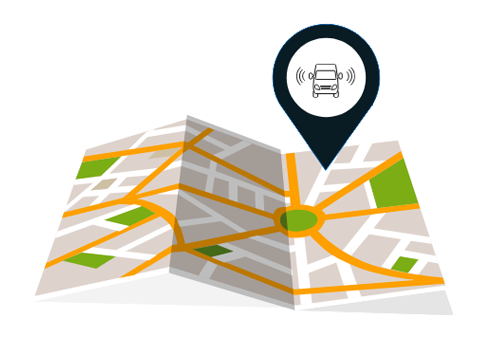Compare vehicle tracking systems
- Real-time insights into vehicle location, fuel efficiency and driving behaviour
- Leverage data to maximise savings on fuel, insurance and maintenance costs
- Find deals tailored to your needs in just 30 seconds


Why compare vehicle tracking systems?
Comparing vehicle tracking systems helps you find deals to save money and choose a device suitable for your business needs and budget.
- Our database has a wide range of vehicle trackers.
- We partner with industry-leading, long-established companies that have more than 600,000 live devices. No matter your company size or vehicle type, we’ve got you covered.
- We’re rated excellent on Trustpilot, highlighting our commitment to positive customer service.
3 reasons to compare vehicle trackers with iCompario
Save time
Get offers that suit your business needs in just 30 seconds. Apply online in a few easy steps.
Save money
The right vehicle tracker enables you to save money on fuel, insurance, maintenance and repairs.
Choose the best
We compare the widest range of products to find the best vehicle trackers for your business needs.
Business vehicle tracking features
Vehicle tracking solutions for every vehicle type
How does vehicle tracking work?

It works by using GPS (Global Positioning System), mobile networks and a web platform to track the location and movement of your vehicles in real-time. By installing a small vehicle tracker, you can gather crucial data such as location, speed, direction and vehicle status.
You can access all this information remotely from any internet-connected device. View the location of all your fleet vehicles, monitor driver behaviour, fuel consumption, idling times and more in customisable, easy-to-read reports.
At iCompario, we compare business vehicle tracking systems across the widest range of trackers so you can get the best deal available.
Benefits of vehicle tracking
From real-time location tracking to time and cost- saving benefits, business vehicle tracking gives you full control and visibility over your fleet.

Take control of your fleet
Maximise fleet efficiency, increase safety and save time and money. Optimise routes, monitor fuel consumption and make informed decisions on maintenance.
Increase safety and security
Keep your vehicles and drivers safe with live location monitoring and geofencing. Promote safer practices and reduce accidents and insurance costs.
Save valuable time and money
Save time with ready-to-go reports that you can customise to suit your needs and save money on fuel and repairs. Get the full picture with vehicle tracking.
Choosing the right vehicle tracking system
At iCompario, we know exactly what to look for in a vehicle tracking system so that your business can reap all the benefits.
- Wide range of hardware options: Choose a provider with a complete range of hardware options to meet all needs and budgets.
- Adaptability: Ensure your provider can meet your evolving needs with add-on hardware and extra services.
- Telephone training and support: Look for a provider offering expert technical after-sales care and lifetime hardware warranties.
How iCompario works
About your business
You tell us about your vehicles, your business and the information you need from your tracking.
The best offers
We compare your needs with the products available and get quotes on the best matches.
Track your vehicles
Then after a quick check of details, we pass you over to the relevant company to get you started.
Fancy some reading?
Frequently Asked Questions
Companies use vehicle tracking systems to monitor the location, movement and status of their vehicles.
This system combines vehicle location technology with specialised software, enabling the collection of data to provide full control over fleet vehicles.
Vehicle trackers include GPS trackers, accelerometers, CAN bus connectors, dash cams and in-vehicle cameras.
These devices are powered by the vehicle battery and communicate with tracking software through SIM cards. Some devices have their own battery for hidden placement and use GPS, mobile phone triangulation and radio frequency signals for theft protection.
Business vehicle tracking systems usually come with an online management portal which includes a tracking app where you can access reports and information.
The app can be installed on any device and give you quick and easy access to relevant data.
Prices vary depending on the hardware, data volume and additional services you choose.
Basic subscriptions start from less than £10 a month per vehicle, while more advanced tracking needs can cost several hundred pounds for a fleet.
Compare the market with iCompario to make sure you land the best deal possible.
Vehicle tracking is legal for businesses as long as the driver is aware.
Many businesses and delivery companies choose to track their vehicles to keep their customers informed about the status of their deliveries and the estimated times of arrivals.
The UK law also allows the use of video and sound recordings if drivers are informed.
For more information on the legality of vehicle tracking, read our guide to GPS tracking laws in the UK.